Panasonic TX-75JX940 Review
A 75-inch 4K TV with a comprehensive suite of cutting edge gaming features
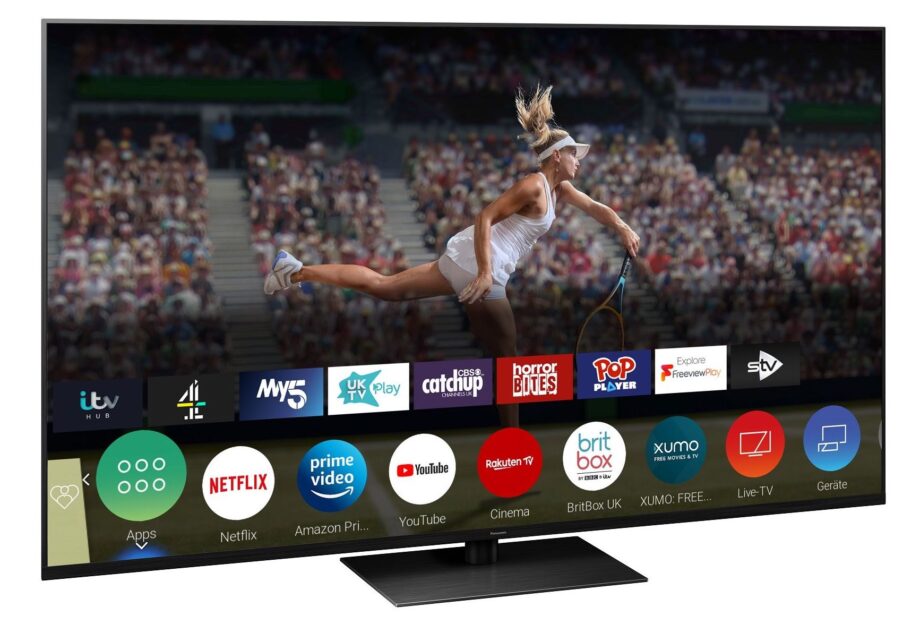
Verdict
A couple of unfortunate LCD panel decisions mean that the TX-75JX940 doesn’t live up to its flagship billing.
Pros
- Good gaming support
- Strong video processing
- Comprehensive HDR support
Cons
- Disappointing black levels
- Edge-based backlighting
- Some black level instability
Key Features
- 75-inch 4K LCD TVPanasonic’s largest flagship 4K LCD TV
- HDR supportCan handle HDR10, HLG, HDR10+ and Dolby Vision HDR, as well as HDR10+ Adaptive and Dolby Vision IQ
- My Home Screen 6.0 smart systemPanasonic’s system combines a simple, colourful interface with lots of customisation and a pretty comprehensive suite of streaming services
- Comprehensive gaming features4K at 120Hz, variable refresh rates and automatic low latency mode switching are covered
- Edge LED lightingThe screen is illuminated from its edges, rather than from directly behind the screen
Introduction
While Panasonic’s main TV focus is OLED these days, thankfully, it realises that many big screen-loving AV fans just can’t afford the sort of monster OLED screen sizes their home cinema dreams demand.
The 75-inch 75JX940 is clearly positioned to provide a king-sized TV option for much less than any similarly large OLED TV would cost, while still packing serious picture processing horsepower and plenty of next-gen gaming support.
Availability
- UKRRP: £1899
- USAunavailable
- EuropeRRP: €1799
- Canadaunavailable
- Australiaunavailable
The 75JX940 costs £1899. This isn’t by any means the lowest price around for a 75-inch TV, but it seems reasonable for a set that carries both Panasonic’s latest flagship video processor and support for the gaming world’s latest graphics features.
As well as the UK, the TV is widely available across Europe (where it’s available at the time of writing for 1790 Euros), but Panasonic no longer sells televisions in most other territories – including the US and Australia.
Design
- Slim screen frame
- Surprisingly small centrally mounted stand
- Ultra thin rear at its edges
The 75JX940 boasts an appealing combination of premium build quality and no-nonsense minimalism. Its frame is very narrow for something that’s wrapped around a 75-inch screen, and the heavy-duty build quality of its brushed metal desktop stand provides plenty of stability, despite being small enough to sit on even narrow pieces of furniture.
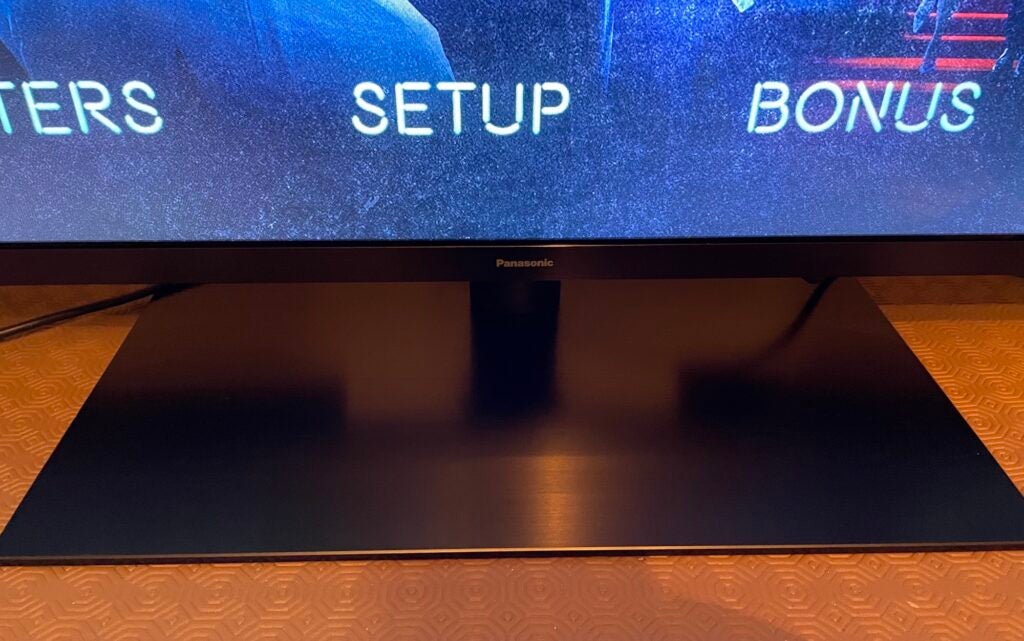
The 75JX940’s rear is almost unfeasibly thin, too, both at its left and right edges and over the screen’s entire top third or so. The rest of the rear sticks out much more, but you won’t really notice this unless you’re watching from quite an angle, or the set is mounted on a wall.
The chunky bit also raises hopes that despite the absence of any front-firing speakers, the 75JX940 might still deliver an audio performance as big as its huge pictures.
Features
- Native 4K LCD TV
- Edge-lit IPS screen
- HDR10, HLG, Dolby Vision, HDR10+ support
Given that it’s Panasonic’s current flagship 4K LCD TV, it’s surprising to find the 75JX940 built around an IPS panel illuminated by edge-mounted LEDs. IPS panels tend to struggle with showing dark scenes convincingly (although they do support wider viewing angles), and using LEDs mounted around the edge of a 75-inch screen rather than directly behind it tends to make it more difficult to control where the light goes.
More promising is the 75JX940’s use of a 100Hz ‘HDR Cinema Master Display Pro’ panel. This is a fancy way of saying that it supports more brightness and a wider colour range than Panasonic’s cheaper LCD options.
Also on board to hopefully counteract potential issues raised by the IPS panel and edge lighting is Panasonic’s Local Dimming Pro system. This isn’t local dimming as I’d normally understand it, though, where sections of the edge LED lighting would output different levels of light to their neighbours at any given moment in response to the image content. Instead, Panasonic claims that its Local Dimming Pro system provides tighter control over the shuttering mechanism each LCD pixel uses to adjust how much light it’s letting through.
This allows Panasonic to argue that the 75JX940 actually provides pixel-level light controls – a talent usually only limited to OLED TVs. While Panasonic’s technology is interesting, though, let’s not forget that unlike OLED screens, the 75JX940’s pixels still depend on a shared external light source, rather than each pixel generating its own light.
Another sign of the 75JX940’s flagship status is its use of Panasonic’s latest flagship HCX Pro AI processing engine. This combines AI learning systems with more processing power and features than its step-down non-Pro version.
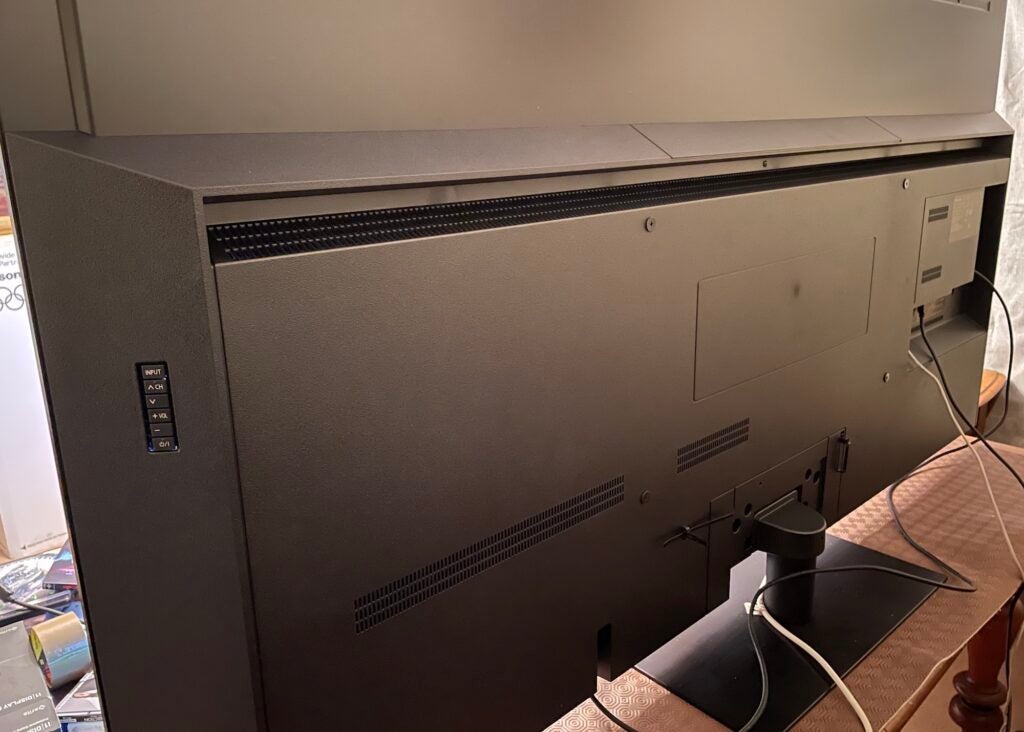
Panasonic was the first brand to offer support for both of the Dolby Vision and HDR10+ ‘active’ HDR formats, and this happily continues with the 75JX940. In fact, it also supports the Dolby Vision IQ and HDR10+ Adaptive systems, which adjust images based on the amount of ambient light in the room, so that the level of HDR impact remains consistent.
The ability to adjust the image in response to ambient light levels is available, too, with the 75JX940’s Filmmaker mode – a third-party picture preset designed by the UHD Alliance to deliver more accurate images.
Yet more good news finds two of the 75JX940’s four HDMI ports supporting the latest key video game features of 4K graphics at 120Hz frame rates, variable refresh rates (including AMD FreeSync Premium), and automatic low latency mode switching. It’s a pity one of these PS5 and Xbox Series X-friendly HDMIs also doubles up as an eARC port that some users will want to use to output lossless Dolby Atmos to compatible soundbars and AVRs. But hey, at least the TV offers eARC support!
The 75JX940 can also decode Dolby Atmos itself – although only into a 2 x 15W speaker system. There’s no attempt to implement a true built-in multi-channel audio system of the type you get with Panasonic’s JZ2000 OLED TVs.
Wrapping up the features is Panasonic’s My Home Screen 6.0 smart system. This continues, to its credit, to stick with an impressively simple, slick and easily customisable interface backed up by built-in voice control. Mercifully, it’s also finally added the long-absent Disney+ and Apple TV+ apps to its list of supported streaming services.
Picture quality
- Good brightness
- Below-par black levels
- Strong processing and gaming
Ultimately, the 75JX940’s story is one of frustration. Of the sort of high-end strengths I’d expect of a flagship LCD TV from a brand as experienced as Panasonic slugging it out against some core hardware-based weaknesses.
The good news starts with the excellence of the HCX Pro AI video processing. This combines know-how built up through years of working closely with actual Hollywood filmmakers, with the input of AI-based picture learning systems, to deliver images packed with subtle colour detail, texture and sharpness. So much so that you end up with that almost indefinable sense of refinement and purity that I’ve come to associate with only the very best image processing engines.
There’s also a balance and subtlety to the TV’s use of light, shade and colour tones that help images stay true to the way they were mastered. As a result, your attention is only drawn to parts of the image it’s supposed to be drawn to, and film and TV show worlds feel immersive and convincing.
The finesse of the 75JX940’s images, together with its large screen size, helps it capitalise spectacularly on its native 4K resolution. Its excellent sharpness and clarity holds up well, even when the screen has to deal with lots of movement in the image. Especially if you use the lowest setting of Panasonic’s Intelligent Frame Creation (IFC) motion processing system. (Avoid the higher settings, though, since these introduce unwanted processing side effects.)
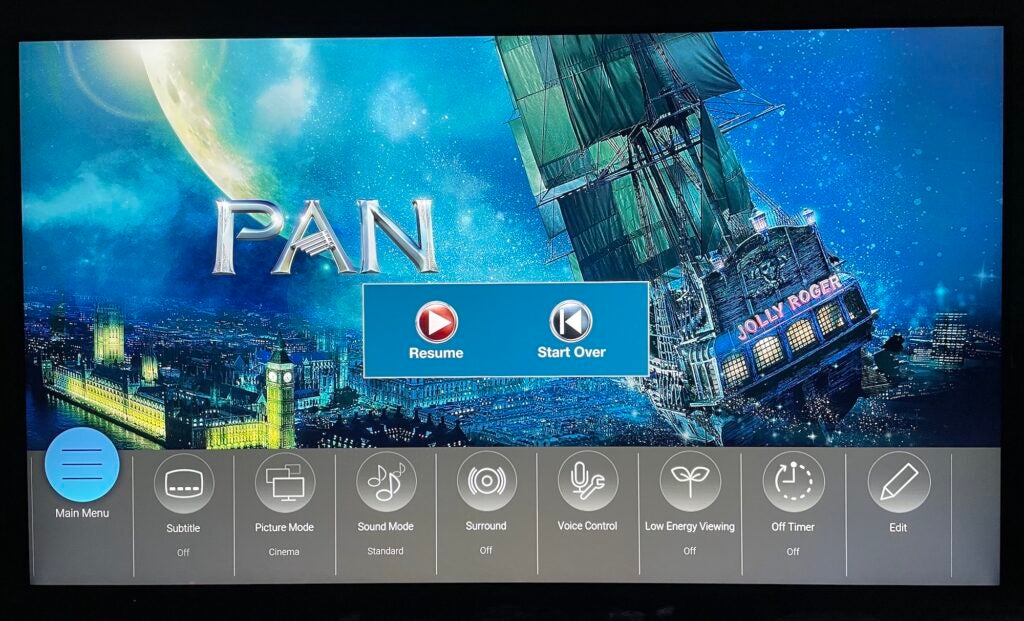
The 75JX940 can get seriously bright. Light HDR content pops off the screen with real intensity and punch – so much so that the screen’s unusually high measured peak light output figure of 720 nits (taken from a white HDR window running against an otherwise black test screen) actually feels conservative.
The measured brightness drops substantially to 540 nits and 500 nits in the 75JX940’s Cinema and Filmmaker modes respectively. But these are still high figures by affordable LCD TV standards – and, again, are made to feel conservative by how well the screen sustains its brightness, even when showing extended full-screen HDR images.
The 75JX950’s high levels of brightness together with the strong processing engine, meanwhile, work together to produce vibrant colours that do good justice to the wide colour gamuts associated with HDR content. Colours lose none of their subtlety or vibrancy, even in the brightest areas.
In terms of gaming, the 75JX940 is great for much of the time, too. Its 4K/120Hz and VRR support both work well, and its brightness, punchy colours and potent sharpness suit game graphics well. The only bad news for gamers is also faced by movie fans: while bright scenes look great, dark scenes kind of fall apart.
As a result, presumably, of its combination of an IPS panel and edge LED lighting, the 75JX940 just can’t deliver convincing black colours, leaving dark scenes or dark picture areas looking distractingly greyed over and flat.
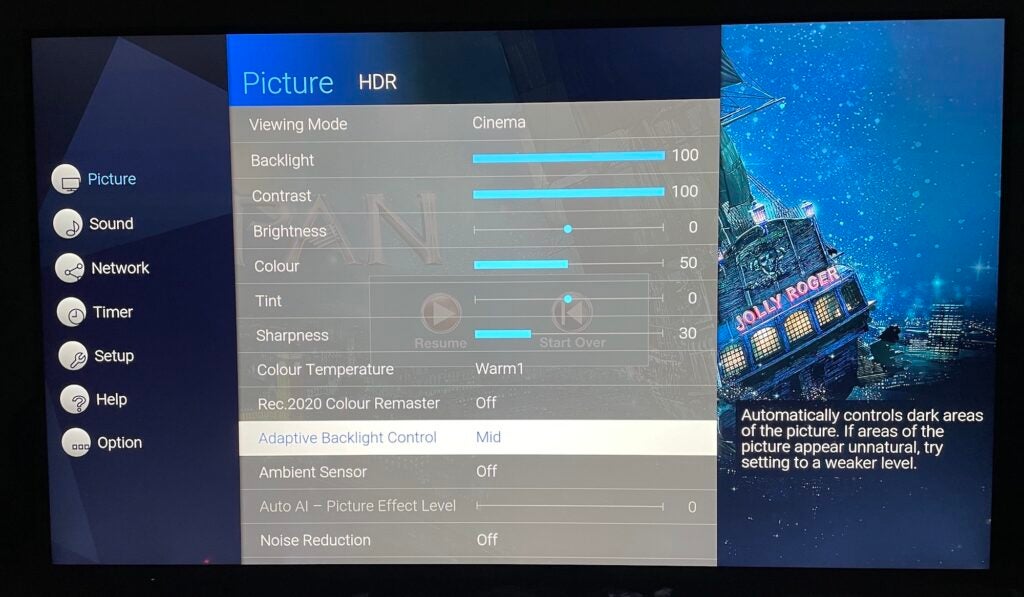
This can inevitably also lead to colours losing some of their saturation and tonal accuracy in dark areas, and shadowy details are routinely lost in the greyness.
A provided Adaptive Backlight Control option improves things; in fact, pictures are pretty much unwatchable without it. However, even this hardware-focused feature can’t stop distracting levels of greyness remaining a constant companion to the 75JX940’s pictures. This Backlight Control system also causes a separate problem of its own in the shape of distractingly obvious backlight fluctuations.
The greyness over dark scenes reduces when you switch from HDR to SDR, thanks to SDR not needing as much brightness. Even here, though, black levels fall substantially short of what I’d expect a flagship LCD TV to manage.
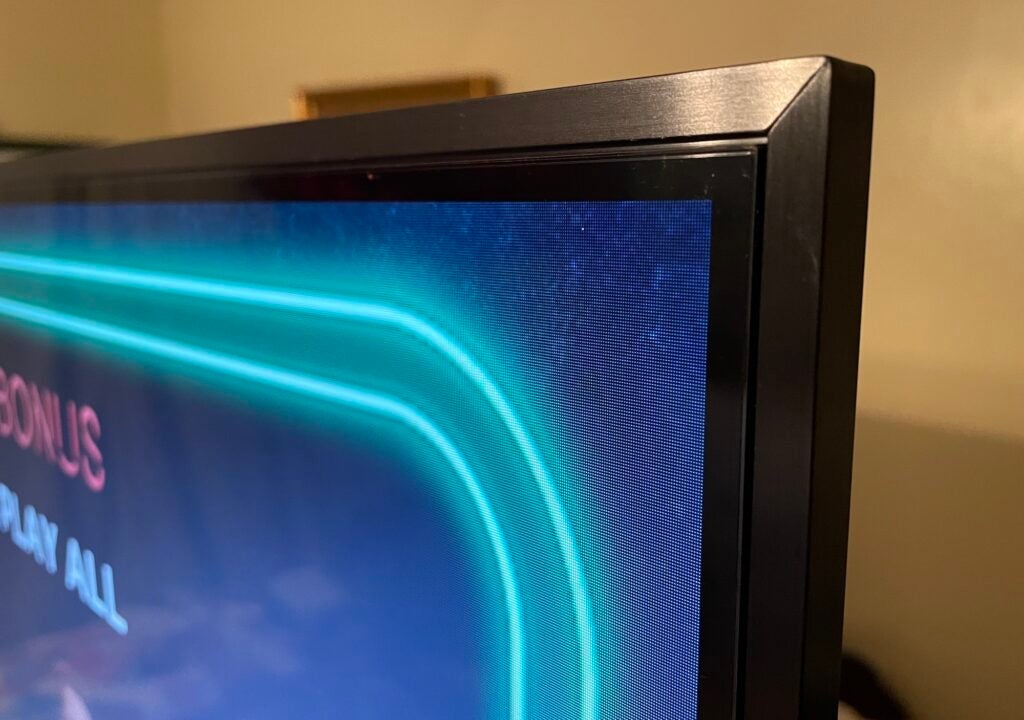
The general murkiness of dark images was joined on our 75JX940 by areas of extra clouding, too, especially in the corners and towards the picture’s edges.
So consistent and noticeable are the 75JX940’s dark scene issues that they ultimately end up not only undermining the screen’s strengths, but ultimately overwhelming them. Unless, at any rate, you never watch TV in anything but the most continually bright rooms.
Sound quality
- Big sound stage
- Good dynamic range
- Surprisingly credible with Dolby Atmos
The 75JX940 is a pretty class audio act. Its 2 x 15W speaker system somehow manages to serve up a sound stage big enough to feel like it belongs with the 75-inch screen, and populates that soundstage with lots of subtle details and dynamic range.
The details seem to be placed with unusual positional accuracy in the soundstage, especially when you’re listening to a Dolby Atmos soundtrack. There’s no sense of sound coming from behind you or overhead, to be clear, but you do get a sense of the action being laid out in a well-created and believable horizontal space that sounds much more immersive than mere ‘stereo’.
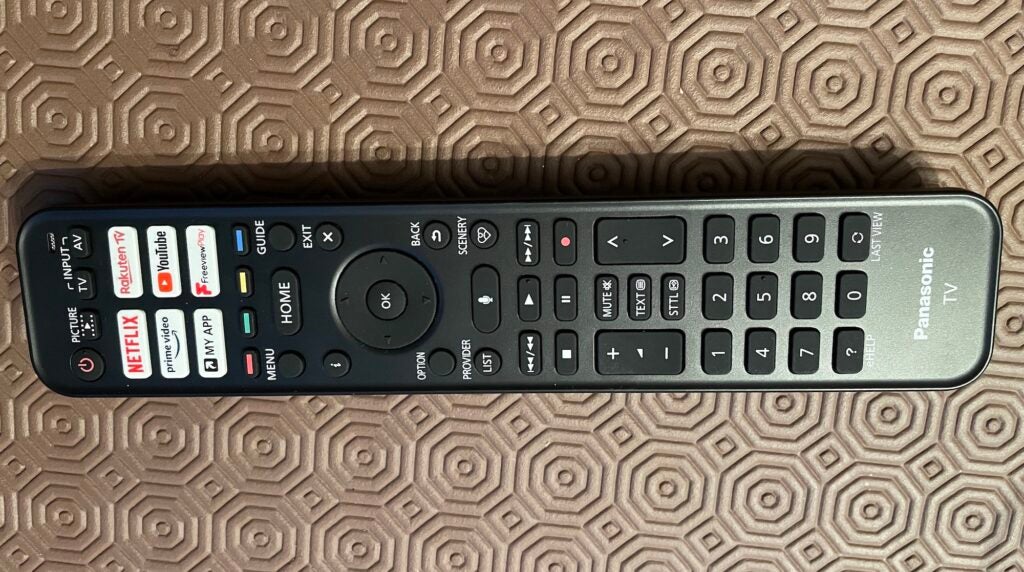
Bass goes deeper than it does on most rivals, too, only starting to distort – slightly – under the most extreme pressure, while trebles reach seriously high without becoming harsh or thin.
Latest deals
Should you buy it?
You want a big, bright TV with good connectivity and strong sound The connections offer support for all the latest gaming features, and bright HDR pictures look impressively bold and vibrant.
Dark scenes aren’t convincing at all The combination of an IPS panel and edge lighting system make it impossible for the 75JX940 to deliver satisfying black colours.
Final Thoughts
For all the good things the 75JX940 does on the sound and picture quality front, ultimately, I can’t see past its black level shortcomings. The constant switching from really enjoyable bright, colourful scenes to unsatisfying, unconvincing dark scenes is tough to take – especially if you’re the sort of person who likes to dim the lights for serious film or gaming sessions.
It doesn’t help the 75JX940’s £1899 case that at the time of writing you can get the brilliant 65-inch LG OLED65C1 OLED TV for £200 less, and Samsung’s excellent 65-inch QE65QN94A Mini LED TV for £100 less. Or, if you really want a 75-inch TV, you can get Samsung’s QE75Q70A Quantum Dot TV for just £1600.
How we test
We test every televisions we review thoroughly over an extended period of time. We use industry standard tests to compare features properly. We’ll always tell you what we find. We never, ever, accept money to review a product.
Find out more about how we test in our ethics policy.
Tested over several weeks
Tested with broadcast content (HD/SD), video streams and demo discs
Used with game consoles
FAQs
Panasonic’s flagship LCD TV supports all the main HDR formats currently available to consumers. This includes the latest Dolby Vision IQ and HDR10+ Adaptive systems, which add ambient light reaction modes to the premium Dolby Vision and HDR10+ formats.
It uses the latest, sixth generation of Panasonic’s own My Home Screen system. This looks a little basic and is limited when it comes to the sort of content-finding features it supports, but it’s easy to use, follow and customise.
Yes. Its combination of a 100/120Hz panel and carriage of two full bandwidth HDMI 2.1 ports means it can handle 4K/120 gaming feeds, variable refresh rates and automatic low latency mode switching.







